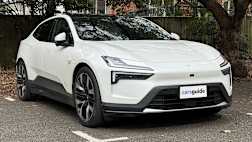Mercedes-Benz has revealed its second-generation GLA small SUV, with an Australian launch scheduled for the third quarter next year.
Unsurprisingly, there are many similarities between the BMW X1-rivalling GLA and the A-Class small car, which was the first member of Mercedes-Benz’s next-generation small-vehicle family.
In fact, exterior design is the GLA’s biggest point of difference, with it forgoing the sleekness of the A-Class for a much buffer look that befits an SUV of any size. That said, it’s still very aerodynamic, with a drag coefficient of 0.28.
Measuring in at 4410mm long (-14mm), 1834mm wide (+30mm) and 1611mm tall (+104mm) with a 2729mm wheelbase (+30mm), the new GLA is shorter in overall length than its predecessor but bigger in all other key dimensions, especially height.
As such, the GLA offers more front headroom (+22mm) and rear legroom (+116mm) than its forebear, while cargo capacity is up 14L, to 435L, with the split-fold rear bench upright.
That said, the GLA’s origins are most apparent inside, with it more or less sharing its cockpit design with its siblings, steering wheel and all.

Specifically, a central touchscreen sits side by side with a digital instrument cluster behind a single pane of glass, which is flanked by five turbine air vents and a single row of physical climate controls.
A large touchpad acts as an alternative input method for the GLA’s MBUX multimedia system that also offers always-on natural voice control activated by uttering the words ‘Hey Mercedes’.
Several engine options are available, but only the GLA200’s 120kW/250Nm 1.3-litre turbo-petrol four-cylinder engine and AMG GLA35’s 225kW/400Nm 2.0-litre unit have been detailed at the time of writing.
Turbo-diesel four-cylinder and plug-in hybrid options are promised, though, but the latter is likely to launch after its internal-combustion counterparts.
The front-wheel-drive GLA200 and all-wheel-drive AMG GLA35 are both mated to dual-clutch automatic transmissions, with the former getting seven speeds, while the latter gets one more.

The zero-to-100km/h sprint takes 8.7 seconds for the GLA200, while the GLA35 makes its performance focus known with a 5.1s effort (if it’s signature Panamericana grille wasn’t enough of a giveaway).
The GLA features Mercedes-Benz’s latest suite of advanced driver-assist systems, including a version of autonomous emergency braking that operates up to 60km/h when detecting pedestrians and stationary vehicles.
Lane-keep assist, blind-spot monitoring, adaptive cruise control (with active speed-limit recognition) and evasive steering assist are also available, among other active safety features.
Unlike the A-Class, the GLA features multi-link rear suspension as standard, while the front axle features MacPherson struts. The AMG GLA35 goes one step further with adaptive dampers.
Mercedes-Benz Australia says pricing and specification details for the new GLA range will be confirmed closer to its launch, while an AMG GLA45 flagship with up to 310kW/500Nm is expected further down the line.





.jpg)

.jpg)
.jpg)

.jpg)


.jpg)




.jpg)
.jpg)
.jpg)
.jpg)



 (1).jpg)


.jpg)
